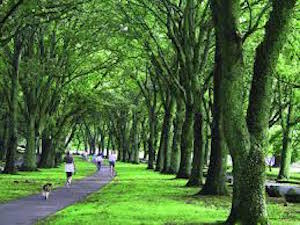Some of New Zealand’s most significant historical documents are this year’s inscriptions onto the UNESCO Memory of the World New Zealand documentary heritage register.
The papers of Auckland’s founding father Sir John Logan Campbell, the Katherine Mansfield Literary and Personal papers, the Waipu Scottish Migration Collection and Lancelot Eric Richdale’s Papers on research of New Zealand seabirds in the early 20th century have been inscribed.
UNESCO launched the Memory of the World Programme in 1992 and it sits alongside UNESCO’s World Heritage List and Register of Intangible Cultural Heritage. The programme recognises the significance of documentary heritage, as well as the institutions that care for it.
Memory of the World New Zealand Trust Chair Dianne Macaskill said, “the Memory of the World Trust is delighted to now have 20 inscriptions of significant documentary heritage items on the register. All greatly contribute to the story of our nation’s history and heritage and are significant to the identity of New Zealanders today.
“The Sir John Logan Campbell Papers are significant to the business and social history of the early days of Auckland.”
 Sir John Logan Campbell (1817-1912) was Auckland’s ‘founding father’ and was at the heart of the settlement’s commercial and cultural affairs for over 60 years. He is also renowned as the city’s greatest benefactor, including his gift of Cornwall Park to the people of New Zealand.
Sir John Logan Campbell (1817-1912) was Auckland’s ‘founding father’ and was at the heart of the settlement’s commercial and cultural affairs for over 60 years. He is also renowned as the city’s greatest benefactor, including his gift of Cornwall Park to the people of New Zealand.
Philippa Price, Heritage Manager, Cornwall Park Trust Board (Inc) says,“The Sir John Logan Campbell Papers remain a treasured part of Auckland’s cultural heritage because of their diverse scope and rich historical worth.”
“The Katherine Mansfield papers are highly significant to the works of the author and the international recognition it receives today,” Dianne says. Katherine Mansfield (Kathleen Beauchamp, 1888–1923) is New Zealand’s most enduringly important writer, known principally for her short stories. Her style saw her credited for reinventing the modern form in English.
Turnbull Library’s Chief Librarian, Chris Szekely says, “the Katherine Mansfield papers held at the Turnbull Library comprise the world’s foremost collection of her personal and literary writings. They include original correspondence, notebooks and journals, and other documentation relating to her life and works.”
The Waipu Scottish Migration Collection is the first successful inscription from outside a main centre. The collection documents a significant international migration by the Reverend Norman MacLeod and his followers in the 1800s from Scotland to Nova Scotia, via South Africa to Australia, and to New Zealand, reflecting the spread of the British Empire of the time.
Waipu Museum Manager Fiona Mohr says the Museum is excited to receive the UNESCO honour of inscription onto the Memory of the World New Zealand register.
“Waipu’s story is unique in New Zealand, in that it was for over 70 years a singular community of <1000 Gaelic speaking Scots, cohorts of Reverend Norman MacLeod.”
The collection comprises 1,350 photos (200 plus portrait photos of original settlers), 11 diaries, 211 personal correspondence letters, 113 official correspondence, 76 printed documents with handwritten inscriptions, 3 cadastral maps, 2 maps, 13 inscribed books, 16 shipping records, 3,248 genealogy lists and 14 drawings.
Lancelot Richdale papers document early research into New Zealand seabirds. They are of great scientific value and include rare early films of albatrosses at the now world-renowned Otago Albatross Sanctuary. These documentary heritage collections are excellent sources of research for historians, researchers, educators and many others.
Anna Blackman, the Hocken Collections Curator of Archives and Manuscripts, says “This extensive and unique collection of field notes, photographs, negatives, motion picture film and research papers document Lance Richdale’s meticulous and internationally recognised research into the lives of New Zealand seabirds in particular the Northern Royal Albatross at Taiaroa Heads, the Yellow-Eyed Penguin on the Otago Peninsula and the petrels and prions of Whero Island.
“Richdale’s use of motion picture film to record the behaviour of the birds is probably a New Zealand first.”









Join the Discussion
Type out your comment here:
You must be logged in to post a comment.